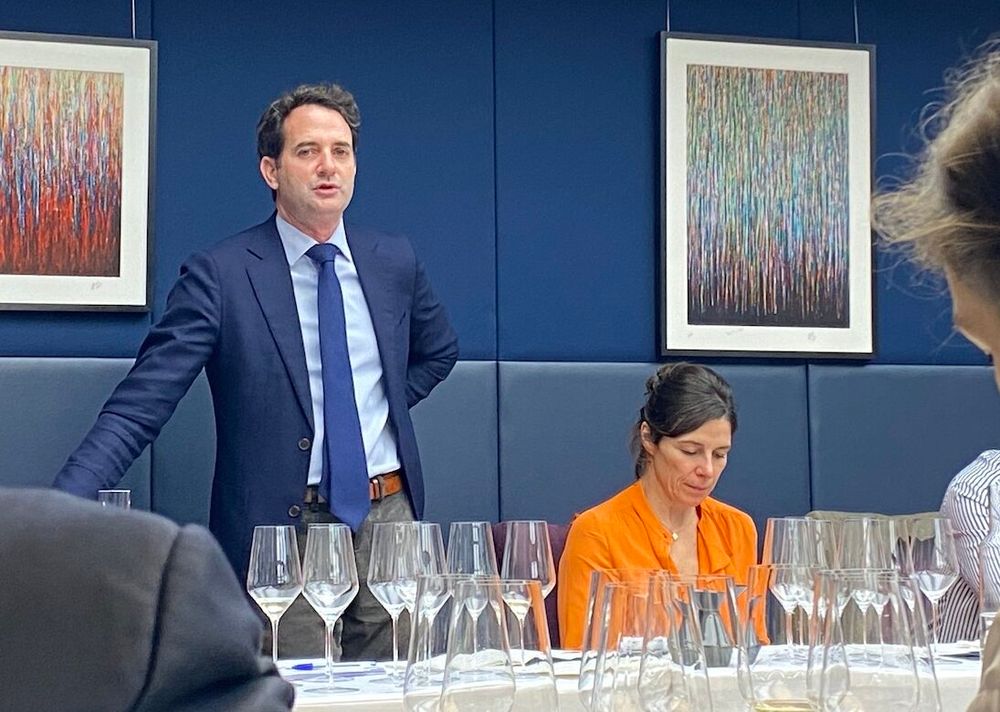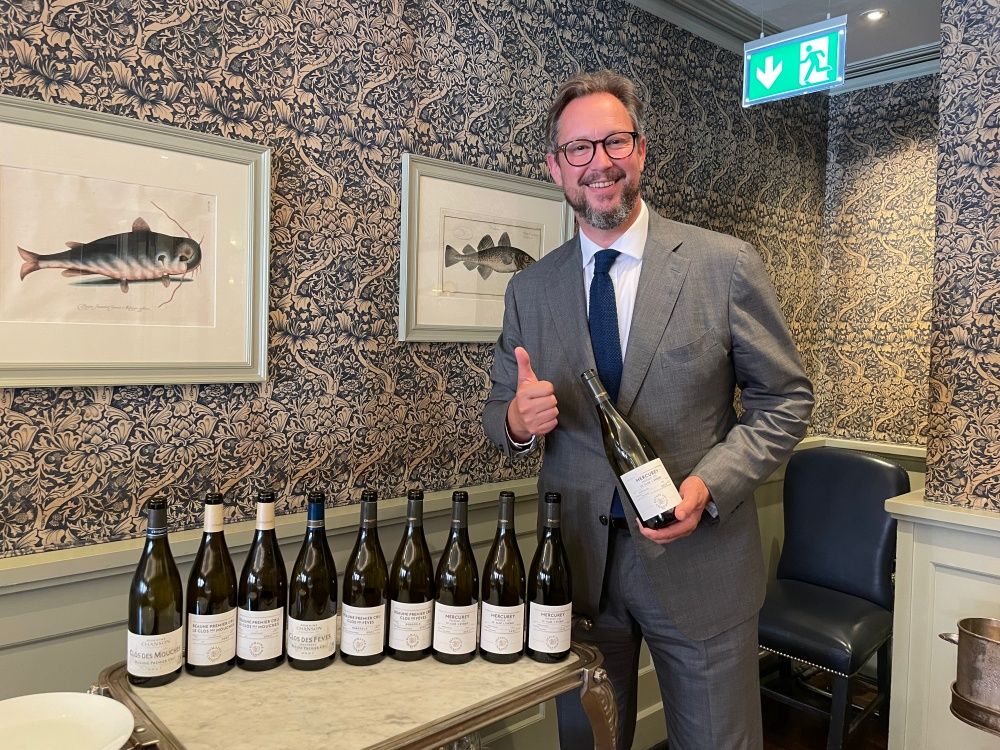“Mangenot revealed that very slow extraction, longer cold soaking and extra whole bunch maceration had been three important technical adjustments for the 2020 vintage,” Dean writes.
“The hottest vintage ever,” professed Matthieu Mangenot, Albert Bichot’s assistant technical director, during the leading Burgundy producer’s trade tasting of the 2020 vintage in London in December. And after sampling eight whites and 16 reds from their six Burgundian estates, it was clear that 2020 is a very fine vintage that will give drinkers a huge amount of pleasure.

“Chardonnay was more affected than the reds by the water shortage”
How Albert Bichot dealt with the challenges
The 2020 vintage will also go down as a visual freak – for the reds that is. They have so much colour that drinkers will be forgiven for wondering if it is indeed a glass of Burgundian Pinot Noir in front of them. “It is a very dark colour and not normal,” Mangenot admitted. “We were surprised how Pinot could give such good colour, but there is no sign of over-extraction – it is the vintage.” Richard Bampfield MW, Albert Bichot’s longtime UK brand ambassador, concurred that the hues of the 2020s were “unique over the last 20 years.”
It is possible of course that the heat of 2020 was a key factor behind the deeper colour of the Pinot Noirs. “2020 was much higher in terms of polyphenols even than 2015, which had the previous record,” Mangenot continued. Yet the 2018 vintage, which he said was the previous hottest, did not see the same colour.
“We had to deal with several issues which were quite challenging. If you look at the figures, 2020 is the hottest vintage ever. Even 2003 was a bit cooler compared to 2020. We were a bit frightened by the climactic conditions of the vintage as we had in mind what happened in 2003 and the balances of the wines then, but 2020 was totally different to 2003 – you can’t really compare the two. Because of the water shortage the Chardonnay slowed down and we had quite a hectic maturation process…kind of stop and go with the maturity affected by the lack of water. Chardonnay was more affected than the reds by the water shortage. The concentration increased thanks to the heat and the north wind. There were no issues of sorting, though, and the fruit aromas were not overcooked.”

Matthieu Mangenot and export director Delphine de la Fouchardière, London, December 2021
Mangenot revealed that very slow extraction, longer cold soaking and extra whole bunch maceration had been three important technical adjustments for the 2020 vintage. “The idea was to extract very slowly and get as much fruitiness and expression of the terroir as we could. We used a bit more cold soaking: 5-7 days to get more fruit and freshness. We also did a little bit more whole bunch maceration – more than the 20% we normally do. It was up to 40-50% in some wines. It did not increase acidity levels if you look at the lab results but did help freshness. It also lowered alcohol levels a bit too. We also moved from pigeage to pumpovers, and got good results here with the freshness. Bottling was a bit earlier than normal to help retain that freshness.”
The importance of when to pick was especially acute in 2020 but the signs are that Albert Bichot got it right in its six estates: Domaine Long-Depaquit in Chablis, Domaine du Clos Frantin and Domaine du Château-Gris in Nuits-St-Georges, Domaine du Pavillon in Pommard, Domaine Adélie in Mercurey and Domaine de Rochegrès in Moulin-à-Vent. Although harvest was earlier than usual, so was budburst, which meant that the desired 100 days of ripening elapsed between flowering and picking.
No cooked characters or over-ripeness were evident in the wines tasted. Importantly, they look to have the combination of substance and structure to last. The oak regime appears to have been skilfully judged, with no over-oakiness apparent. Between 20-35% new oak was used for the whites, and 30-40% for the reds.
Six wines that stood out from Albert Bichot in 2020

Meursault 1er Cru ‘Les Charmes’, 2020, Domaine du Pavillon
Intense citrus notes with fabulous concentration; exceptional length
Chablis Grand Cru ‘Moutonne Monopole’, 2020, Domaine Long-Depaquit
Pronounced minerality; very attractive fruit and steely line of acidity
Corton Charlemagne Grand Cru, 2020, Domaine du Pavillon
Magisterial, complex Corton with remarkable concentration, intensity and length

Chambolle Musigny 1er Cru ‘Les Chabiots’, 2020
Very seductive red fruit with herbal notes; elegant with silky tannins and a very long finish
Corton Grand Cru ‘Clos des Marechaudes’ Monopole, 2020, Domaine du Pavillon
Complex with excellent length and lots of freshness; quality tannins with a silky thread; power yet finesse
Echezeaux Grand Cru, 2020, Domaine du Clos Frantin
A veritable tour de force with delectable concentrated fruit, super fine tannins and great persistence










































